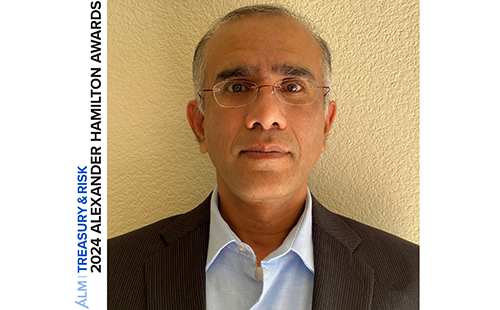 Interest rates are on the rise. Finally, after many years of historically low rates across most of the G-20, sufficient economic strength in global markets is poised to drive governments to increase prime borrowing rates.
Interest rates are on the rise. Finally, after many years of historically low rates across most of the G-20, sufficient economic strength in global markets is poised to drive governments to increase prime borrowing rates.
In the United States, especially, this is yet another indicator that economic recovery has been successful. A strong economy is usually a positive for most organizations. However, treasurers must consider five key factors if they want to reap the potential gains as we enter into what is expected to be a rising-rate environment.
Recommended For You
1. Foreign Exchange
The most obvious impact of an increase in interest rates is the effect on foreign exchange (FX). The exchange rate between currencies is driven by the relative difference in tenor points between the two currencies' yield curves. Even a hint of rising interest rates in the United States strengthens the dollar relative to foreign currencies. Depending on an organization's exposures to global currencies, the strengthening of the U.S. dollar has the potential to quickly erode bottom-line earnings.
A good hedging program will help smooth out FX volatility in the short term, but a treasury team designing a hedging program needs to consider the timing of when hedges mature and/or roll forward in order to minimize medium- and long-term impacts of rising interest rates.
It's possible to manage the complexity using a traditional approach to hedging, but that can also add significant time to a treasurer's day. There are benefits to leveraging a technology solution, including:
- visibility into FX exposures;
- assessment of sensitivity to changing FX conditions, both by amount and time; and
- minimal effect of accounting compliance on hedging operations.
For most organizations, riding out FX volatility is not acceptable. Most boards require an active FX strategy to protect as much of the balance sheet as possible from FX impacts.
2. Returns on Excess Cash
For many treasury teams, rising interest rates also mean higher returns on excess cash. Even quarter-point increases can generate multimillion-dollar returns, based on the stockpile of cash reserves that many organizations have worked so hard to build since 2008. Yet higher interest rates also widen the gap between basic overnight investing and other investment options. Accepting longer investing horizons, or introducing some liquidity and/or counterparty risk (e.g., prime money market funds after last year's regulatory change), will reward treasurers with even greater returns.
When rates were at or near zero, the incentive to take on risk was very low, and the riskier investments often generated only a few extra basis points. For many companies, the difference, in absolute dollar terms, was not significant enough to justify taking on risk. But as higher-risk investments begin to yield significantly higher returns, an organization's risk appetite may shift. Treasurers will no longer be able to justify ignoring higher-yield options by arguing that rates are unattractive across the investing universe. Treasury may be required to adopt a more active investment strategy, translating to a search for greater yield.
Combine this with the expected—but not fully realized—impacts of Basel III on banks' willingness to hold corporate non-operational deposits, and it is conceivable that treasurers might be forced to evaluate different investment alternatives beyond simply "leaving the cash in the bank." The positive side of this change is that treasurers in a rising interest rate environment will finally be rewarded for moving cash away from their banks.
3. Borrowing Costs
Borrowers, especially those with variable-rate exposure, are clearly affected by rising rates. For most floating-to-fixed hedging opportunities, the expectation of future rate increases is already built into the cost of fixing their floating rate. Therefore, the question is not so much one of tactics, but instead one of strategy. Proactive treasurers are thinking about how they can reduce the need for borrowing.
 Consequently, CFOs and treasurers are turning to cash visibility, forecasting, and working capital optimization as techniques that can help them unlock hidden cash. The simple exercise of uncovering idle or underutilized bank balances is a starting point, which is expanded upon by effective forecasting that tells CFOs exactly how long cash flow will be available. When treasurers can extend the horizon of reliable forecasting, they reduce the need to maintain idle cash, as they have a more clear and confident view of how much cash their organization will require, and when.
Consequently, CFOs and treasurers are turning to cash visibility, forecasting, and working capital optimization as techniques that can help them unlock hidden cash. The simple exercise of uncovering idle or underutilized bank balances is a starting point, which is expanded upon by effective forecasting that tells CFOs exactly how long cash flow will be available. When treasurers can extend the horizon of reliable forecasting, they reduce the need to maintain idle cash, as they have a more clear and confident view of how much cash their organization will require, and when.
Meanwhile, reducing working capital needs enables a company to redeploy cash to reduce its variable-rate borrowing, which in a rising-rate environment offers a more compelling ROI. Add to this equation the CFO's interest in further improving working capital management through the extension of payables—often enabled by a supplier-financing program—and unlocked cash can easily measure in the millions, if not more.
While moving to fixed-rate borrowing is the simple answer, treasury teams can deliver greater strategic value if they can reduce the organization's borrowing altogether.
4. Intercompany Loans
It is very common for organizations to maintain a robust intercompany-lending program, and these programs are also affected by changes in interest rates. For American companies, the cost of extending credit to subsidiaries increases as their cost of capital ticks upwards.
Intercompany loans are usually variable-rate, meaning that increased borrowing costs are passed directly to the subsidiary. However, there may be complications if rates in the subsidiary's geography are not increasing, and suddenly borrowing from the parent company costs more than borrowing locally. Another complication revolves around the currency of the loan. Often the parent and subsidiary involved in an intercompany loan operate in different currencies, which adds further volatility to the cost of the loan. Managing intercompany FX exposure is critically important, as currency-translation costs can become very difficult to explain to shareholders if FX volatility happens to occur at the end of an accounting period.
Like with borrowing costs, managing an intercompany loan program is not just about the interest rate impact. Treasury must also pay close attention to foreign exchange issues and their impact on the total cost of intercompany borrowing.
5. Supply Chain Impacts
Supply-chain financing can help unlock working capital for organizations. In a period of rising rates, supply-chain financing can also offer a benefit for the company's suppliers. As interest rates rise, suppliers may find themselves with less access to the low-cost capital they need to continue to manufacture and deliver goods to their customers. This is a particularly prevalent problem for suppliers based in emerging economies. And suppliers anywhere in the world may find that increasing rates are decreasing their opportunity to borrow capital to invest in business efficiencies, which puts pressure on their ability to grow. In some cases, simply maintaining their business may be difficult if they already have rising debt levels.
CFOs of buying organizations can support their supply chains by offering financing to their smaller or struggling suppliers, based on their ability to access to low-cost capital. Whether using their own funds or leveraging the funding of a partner bank, buyers can effectively extend capital via relatively low-interest early payment of invoices. The suppliers receive cash early in return for a discount.
So as long as the supplier's return on cash exceeds the discount the supplier offers to receive payment early, engaging in a supply-chain finance solution is an easy win for any organization offering goods and services to a larger buyer. For many, supply-chain finance has made sense for years. Within a rising-rate environment, the business case becomes even more compelling.
A Strategic Opportunity
Rising interest rates offer an opportunity for treasurers to deliver more value for their organizations. Historically low interest rates effectively handcuff treasury teams, limiting the creativity they can offer. With interest rates increasing, the gloves are effectively coming off, and forward-looking treasurers are able to embrace a variety of methods to increase returns on cash, reduce financing costs, mitigate currency risk, and unlock value through supplier financing. Effective treasury teams are looking forward to these opportunities.
———————————
 Bob Stark is the vice president of strategy for Kyriba. In this role, he is responsible for that company's global product strategy and market development. Stark is a 19-year veteran of the treasury technology industry, having served in multiple roles at Wall Street Systems, Thomson Reuters, and Selkirk Financial Technologies. He is a regular speaker at treasury conferences, including AFP National, EuroFinance, and regional AFP events.
Bob Stark is the vice president of strategy for Kyriba. In this role, he is responsible for that company's global product strategy and market development. Stark is a 19-year veteran of the treasury technology industry, having served in multiple roles at Wall Street Systems, Thomson Reuters, and Selkirk Financial Technologies. He is a regular speaker at treasury conferences, including AFP National, EuroFinance, and regional AFP events.
© 2025 ALM Global, LLC, All Rights Reserved. Request academic re-use from www.copyright.com. All other uses, submit a request to [email protected]. For more information visit Asset & Logo Licensing.




